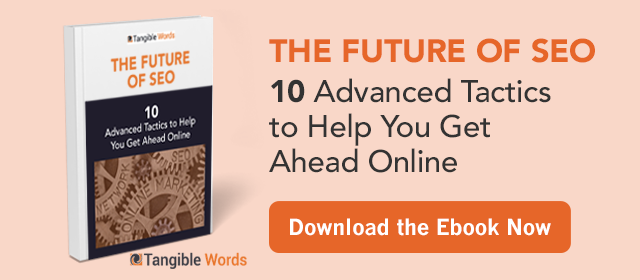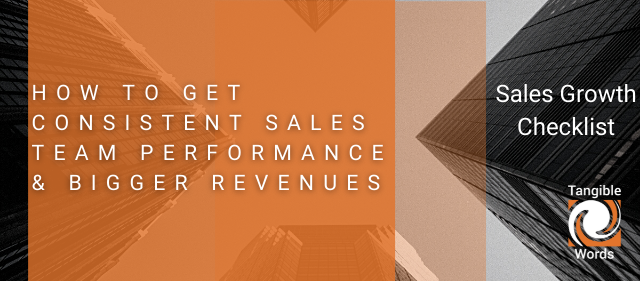SHARE
The Top 3 Inbound Marketing Trends

Inbound marketing trends are always developing and changing. As you’re preparing your marketing plan here are three key trends to keep an eye on, compiled by inbound marketing specialists. These trends will be the key to generating more qualified leads in your business next year, and here’s why.
1. SEO is Changing to Integrate Voice Search
Services like Google Home, Alexa, and Siri are drastically changing the landscape of SEO, yet again. If there’s one thing that’s clear about SEO, it's that it is constantly evolving, and sometimes the shifts are off in an entirely new direction.
The shift to voice search is not brand new, obviously things like Alexa and Siri have been around for a few years now. But, the way they’re changing SEO is very different from what has happened in the past. SEO has long been about keywords, both short and long tail.
How you use those keywords is changing. When someone types a query into a search engine they generally type an incomplete sentence, something like “Thai restaurant Toronto”. When you use Siri or Alexa, you almost always use complete sentences, like “Hey Alexa, where is the nearest Thai restaurant in Toronto?”
You know that search engines crawl pages looking for key words and key phrases. But the phrases voice search looks for are different. Now they’re looking for full sentence questions.
So, how do you integrate voice search into my SEO?
 Start writing content that includes full question phrases. Content will still need to be written so that it makes sense and offers value to the reader. There are plenty of ways to add this type of phrasing into your content strategy. One of the easiest ways to start is with a FAQ page. Just make sure to include the full question in your text the way a user would ask it to Alexa or Siri.
Start writing content that includes full question phrases. Content will still need to be written so that it makes sense and offers value to the reader. There are plenty of ways to add this type of phrasing into your content strategy. One of the easiest ways to start is with a FAQ page. Just make sure to include the full question in your text the way a user would ask it to Alexa or Siri.
2. Your Users Want a Personalized Experience
There is an overwhelming amount of information available on the internet. More and more users are looking for a personalized experience when they are using a website or an app. AI is accomplishing this in the advertising on social media, in the “recommendations for you” on shopping sites, and in the curated non-chronological feeds on Facebook, Twitter, and Instagram.
Some of these *cough-non-chronological-feeds-cough* can be super annoying, but some are really helpful and save time. If you’re looking for a product but aren’t quite sure what to call it, AI can offer suggestions for similar items that might be exactly what you are looking for. If you regularly use a certain feature in an app, AI can highlight that feature so it's easier for you to access, and hide the features you don’t use, so screens are less cluttered.
This desire for personalization applies to every interaction with customers; from website pages and content to chat bots, emails and sales calls. You can offer this type of customized experience to your customers in a few different ways.
Using a service like HubSpot allows you to implement logic into email series and chatbots that offer users different options based on selections they make or keywords they use. These data are collected, so that when a lead finally gets in touch with your sales rep, the rep can see all of that history and know how to help the customer as quickly as possible.
Customized services that make it easy to find relevant info and purchase easily mean more qualified leads and higher sales.
3. High Quality Traffic is Better Than High Quantity Traffic
Website traffic is important. But high amounts of traffic don’t always turn into high sales numbers. Consistent traffic that clicks through and makes a purchase or gets in touch with the sales team is more valuable than thousands of people clicking on to your website and then leaving. This is where Conversion Rate Optimization (CRO) comes in.
CRO is the process of enabling your site visitors to complete an action when they are on your site. Whether that’s making a purchase (macro conversion) or signing up for your newsletter (micro conversion).
Obviously macro conversions are the most desirable, but it's not quite as simple as adding a button that says “buy this product!”. More frequent micro conversions build trust, and prime a lead for a macro conversion later on.
There are a variety of ways you can improve your CRO. Using a tool like HubSpot you can:
-
Implement A/B testing on your pages to figure out which types of content get the most interaction.
-
Add a Call To Action (CTA) on each page can help improve CRO.
-
Use lead flows, prompting readers to sign up for your newsletter, on your blog posts can also boost your CRO.
-
Add an unobtrusive chatbot to high traffic pages to help you connect with leads and collect data about what they’re looking for.
Integrate These Inbound Marketing Trends
You’ve probably got more than enough work on your plate just developing your marketing strategy. But even if you just add a little bit of effort in these three areas you’ll see even greater returns.
Remember how micro conversions drive customers to macro conversions? The same goes for your inbound marketing plan. Implementing small changes to target these key concepts will help build foundations for even more improvement over time.
Close More Deals with Advice from Inbound Marketing Specialists
Topics
- Content Creation (297)
- Growth-Driven Design Websites (167)
- Inbound Marketing (146)
- Sales Growth (133)
- Tangible Words (111)
- Search Engine Optimization (85)
- Social Media Marketing (83)
- Hubspot (77)
- Blogging for Business (75)
- Economic Development (64)
- Events & Training (60)
- Company Growth Podcast (49)
- Manufacturing (47)
- Tourism (46)
- Email Marketing (42)
- Case Stories (40)
- Testimonials & Client Feedback (36)
- Education and SaaS (23)
- Google (21)
- Careers (19)
- Inbound Marketing Agency (19)
- Cool Companies (18)
- FAQ (16)
- Alysha Dominico (13)
- Associations (7)
- Food and Beverage (7)
TW Blog Sign-Up
Learn more about how to grow your business and improve your sales team process.



2%20(blog%20dimensions)(alterntate%20text).jpg)



-3.png)
-1.png)